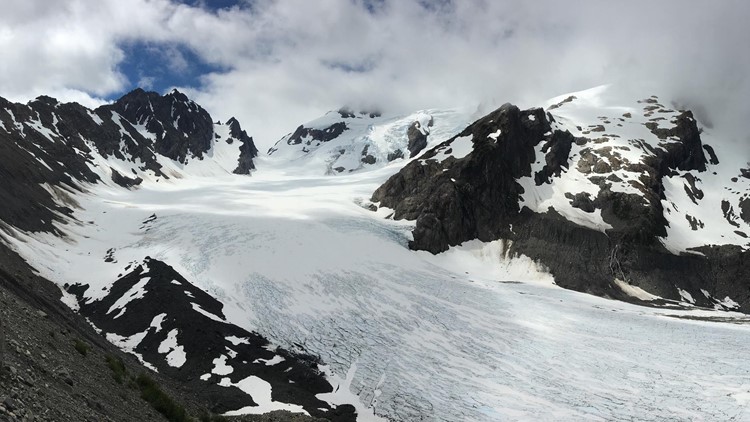I’m no stranger when it comes to camping or putting a few days worth of gear in my backpack and hitting the trail. I love the outdoors. The nature and beauty in Washington state is one of the reasons I moved here from the Midwest.
Not long ago one of my friends from back home, Nate, asked about planning a backpacking trip in the Pacific Northwest. We brainstormed a few ideas, but when I told him Olympic National Park is home to one of the largest temperate rain forests on the planet, we both knew exactly where we were going to visit.
After a little more research and guidance from the Washington Trail Association website, Nate discovered a trail in the Hoh Rain Forest that leads to one of the largest glaciers in the park, Blue Glacier.
The Hoh River Trail led us through 17.3 miles of lush forest to the Glacier Meadows campsite on the shoulder of Mount Olympus.
Yes, a hike through a rainforest to see a glacier.


The National Park Service says the Hoh Rain Forest is one of Olympic National Park’s most popular attractions, and it shows. The visitor center parking lot was full when Nate and I arrived, and I could definitely see why.
There are multiple short nature hikes around the visitor center and the first 12 or so miles of the main trail are relatively flat with lots of spots for overnight camping and beautiful scenery. The Hoh Rain Forest has even been called “the quietest place in the U.S.”
The Hoh River Trail was pretty populated until we reached a popular campsite about five miles into our adventure. A hike to this first campsite would make a fun, simple day or overnight trip with camping areas overlooking the Hoh River.
As we got closer to our first campsite, the Olympus Guard Station, I really started to notice and pay attention to what was around us. I started to see why so many people say this place is special.
The old, moss-covered trees kept getting larger and appeared as though they had been here forever. But at the same time, the forest was teeming with new life and color. There were fallen, rotting trees on the side of the trail, wider than I was tall, that had different fully-grown trees growing out of them. These rotting trees are called “nurselogs,” and they were absolutely mesmerizing to me.
The Olympic Guard Station has bear cables for food storage, a pit toilet, and plenty of camping areas along the Hoh River. The campsite also offers great opportunities for time-lapse photography in the river valley as clouds seemed to disappear over the river as fast as they appeared. The campsite was pretty crowded when we arrived on Saturday night but was relatively empty on our return trek a couple days later.

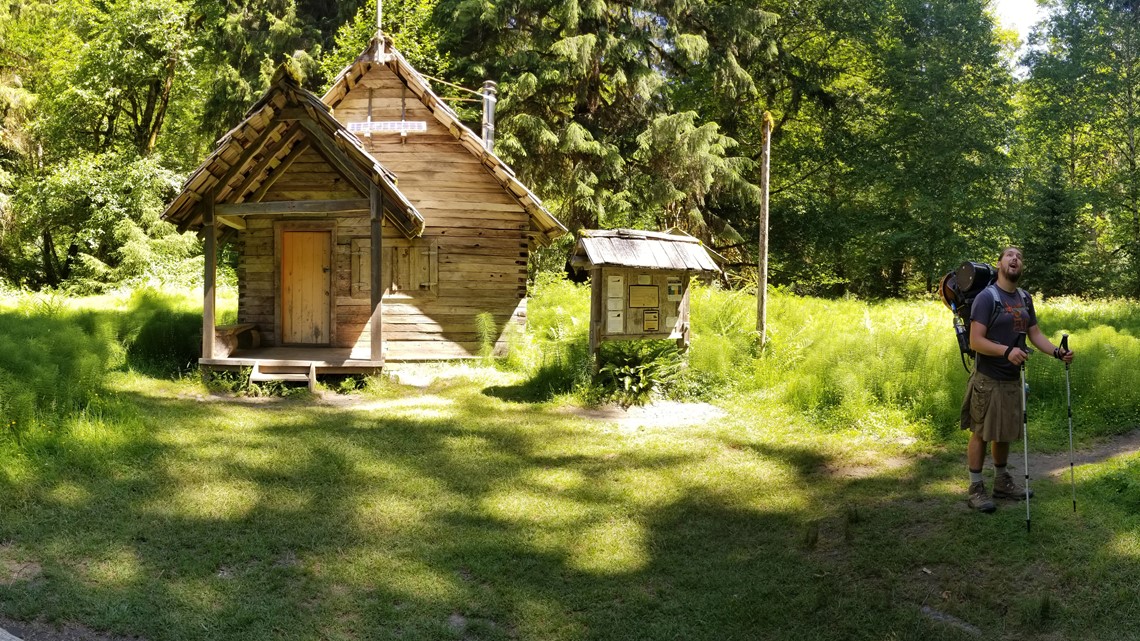
The 8.2-mile hike to Glacier Meadows on the second day was by far the hardest of the trip in my opinion. Although it was a shorter distance than the first day, it was a much steeper hike to our final destination. The elevation drastically started to increase a couple of miles before we reached Elk Lake.
Elk Lake is a nice campground with a pit toilet, bear cables, and an emergency shelter that overlooks the lake. It’s just over two miles from Glacier Meadows and would make for a fine camping spot for anyone interested in making a day hike to see Blue Glacier.


It’s important to pay attention to your surroundings and to watch your step on the trail between Elk Lake and Glacier Meadows. There are parts of the trail that have sharp drop-offs and the rocks become slippery when it rains, and with around 14-feet of rainfall each year, it gets slippery a lot.
While the miles between Elk Lake and Glacier Meadows were strenuous, they also offered some of my favorite views of the hike. Sections of the trail open up to reveal a stunning view of the valley below with mountains all across the horizon.

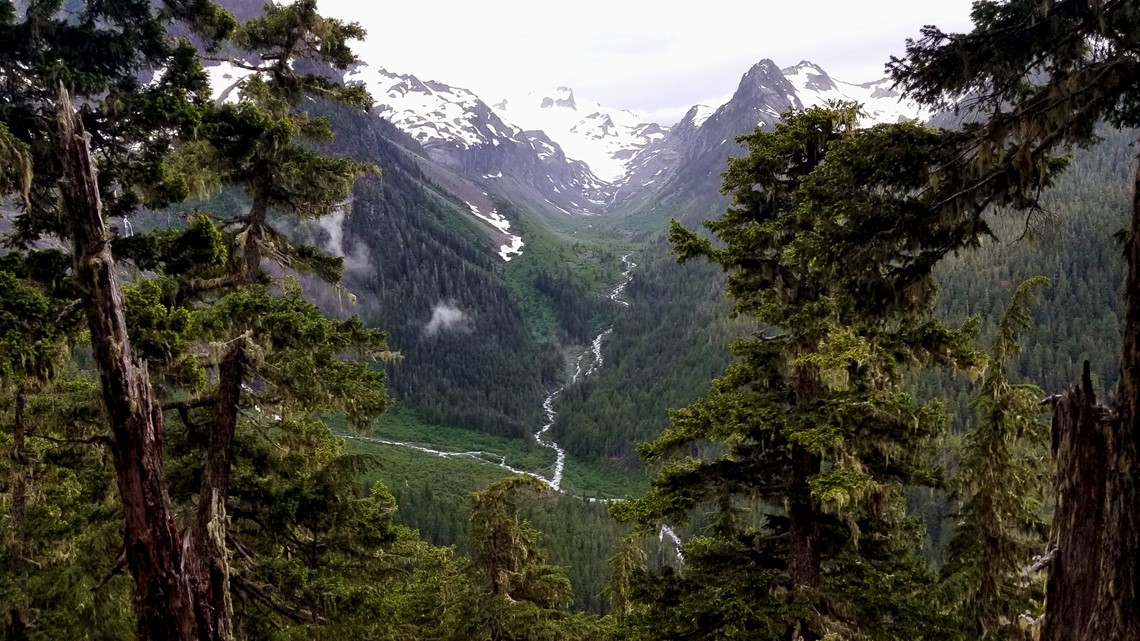
Less than half a mile from Glacier Meadows is what I can best describe as a “super sketchy ladder” down a steep rocky hillside. Whenever Nate and I ran into anyone this far on the trail and asked about upcoming trail conditions, everyone talked about this “sketchy” hillside attachment.
The ladder consisted of two long metal cables running through thick wooden rungs, held in place by little clamps, and tied off to a few anchor trees overhead. Thankfully there was a long climbing rope also tied to the anchor trees that ran down the center of the ladder to help with balance and support. Once repelling down the hillside, we faced a rocky, steep climb back to the trail and the final stretch before reaching the campsite.

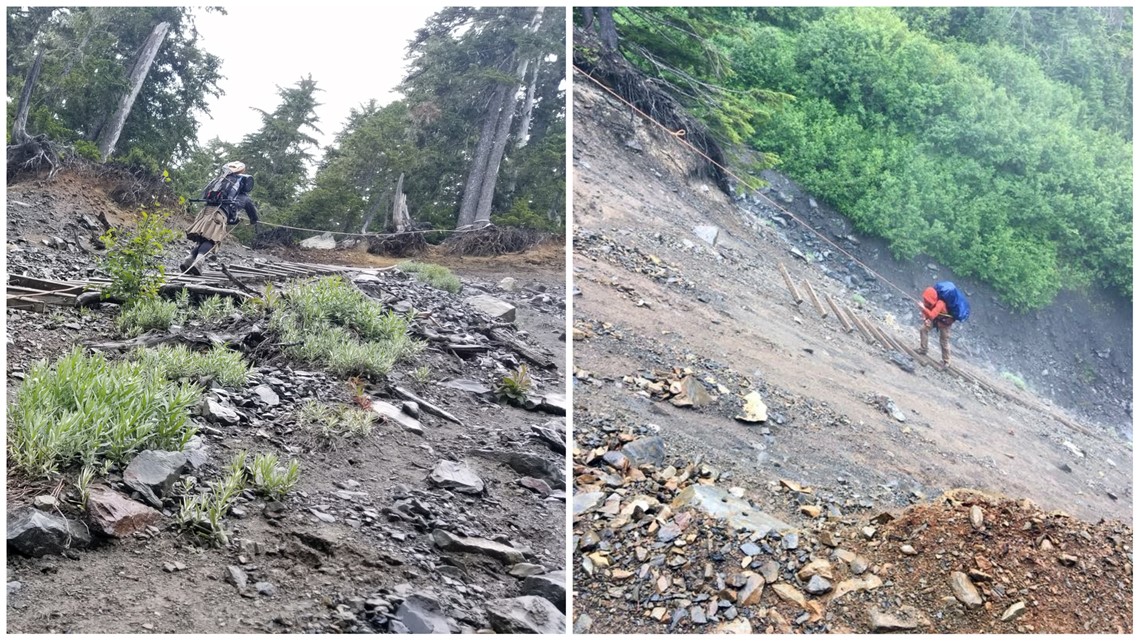
Campsites at Glacier Meadows are the best spot for anyone interested in hiking to Blue Glacier and on to climb Mount Olympus. This campsite was my favorite of the trip. It was very open with plenty of campsites to choose from, bear cables, and several pit toilets (have you realized I’m a big fan of pit toilets yet?). I thought the campsite also had some of the best views out of the others we passed.
There are two trails from Glacier Meadows you can take to see Blue Glacier, the Lateral Moraine, and the Terminal Moraine. The Lateral Moraine was more of an uphill hike compared to the Terminal Moraine. Blue Glacier remained out of sight until almost the very last step going up the Lateral Moraine until all of a sudden the climb ends and you’re surrounded by mountains and a breathtaking panoramic view of the glacier.

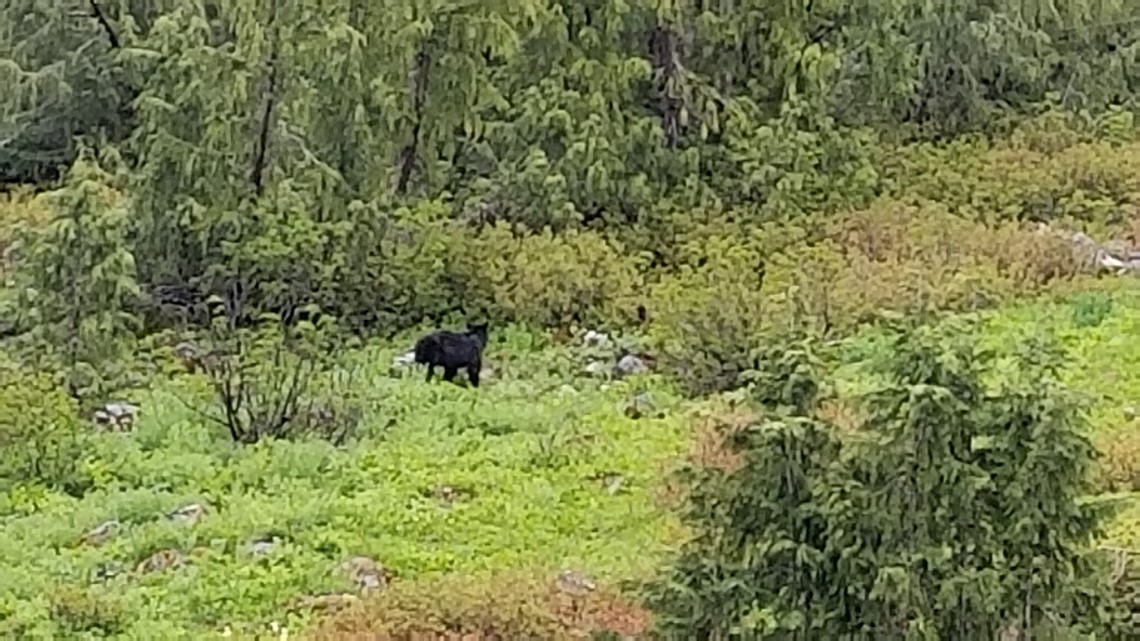
If you ever make the trek to see this glacier in person, be sure to give yourself enough time to fully enjoy what you are seeing. It’s also important to not lose hope if you make it to the top of either of the moraines and your view of the glacier is blocked by fog. This was the case when we made it to the top of the Terminal Moraine, but everything cleared up by the time it took to eat a snack and catch our breath.
The hike back to the visitor center was much easier with most of the journey heading downhill or on flat land. Nate and I took it slow, for the most part, and stayed at the same campsites going back down as we did heading up.
Overall, this was probably the most challenging and incredible hikes I have ever been on. I highly recommend this trek to any experienced hiker looking for a fun adventure. This hike will test your endurance limits and your preparedness for what Mother Nature might throw your way. But it can also give you the thrill of accomplishing something not many can say they’ve checked off their list.
But always keep in mind hiking in the backcountry can be dangerous and you never know what encounters await you on the trails. Be sure to have the tools, supplies, and experience necessary before setting out on an adventure. You should start with the 10 essentials.

